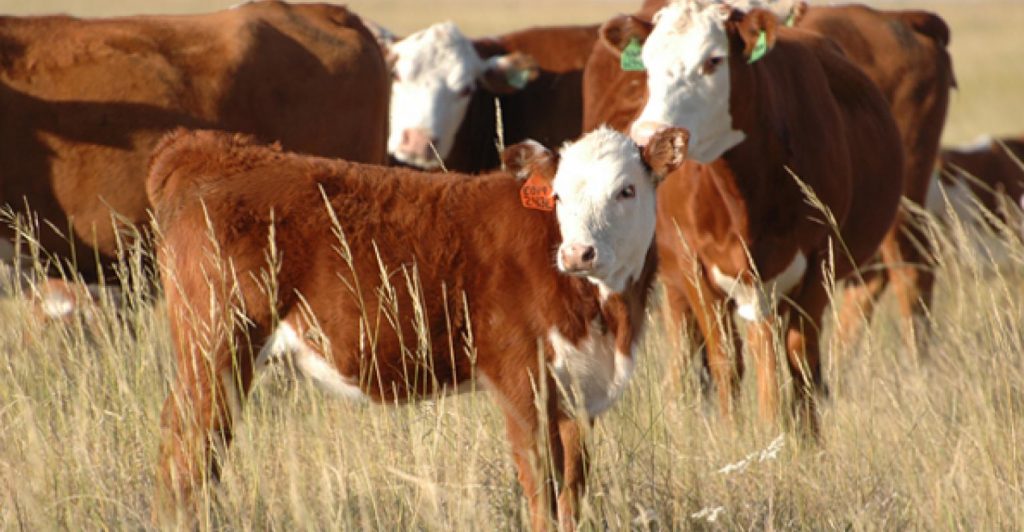
Senior Farm and Ranch Broadcaster Ron Hays is visiting with senior beef and cattle market research analyst at Rabo AgriFinance, Lance Zimmerman, about midterm movement in the beef markets. He said that although April and May retail prices were just short of $8 per pound, a record high, beef demand has held up exceptionally well. While higher prices were expected this year, most thought it would be because supplies were going to be down.
Certain aspects of supplies are behaving as expected, slaughter being the main one. From a year-to-date, year and a half to slaughter is down about a percentage point. Beef cow slaughter is down 17% year to date in the weekly data, and total cow and bull slaughter, including dairy cows and bulls, is down similarly at 15% to 16%.
Zimmerman explained how producers have offset those declines with increases in carcass weights, saying, “Although steer carcass weights should be at their seasonal lows, right now, and perhaps they are for the second quarter, they are well above the lows we entered in late January and early February after some of those winter storms, and about 20 pounds plus above where we were a year ago.”
The reason weights are higher is because of the spread between the fed cattle market and the current cost to gain in feedyards is incredibly wide. The feedyard has every incentive in the world to keep feeding the cattle they have longer. The opportunity to bring new placements into the feedyards at a guaranteed profit, based on where the futures market is today, is a tough sell. Bringing new placements in this summer and looking to market them later this winter is risky.
“The idea is, ‘Let’s keep feeding the one we have into a profit, rather than bring one in that we have to gamble on a little bit.’ So as long as weights stay strong, that’s going to keep these supplies elevated,” Zimmerman explained. “Then you have to look at the slaughter side of it. So, essentially, when can we get slaughter to decline enough to offset the weight increases that we are seeing.”
He believes we are still in a situation where, as he looks at the cattle that are on feed today, there are a substantial number of heifers among them. The situation is similar to the April 1 cattle-on-feed report where the volume of heifers on feed was very similar to the past few years and the percentage of that mix was still very elevated historically. There are more beef on dairy cattle in that mix that are keeping that heifer number perhaps more elevated than in prior history.
“The bottom line is that the cattle that are on feed today represent a population with a cow/calf guy that was still letting go of heifers rather than retaining them,” Zimmerman said. “That being said, we are seeing the first big runs of video auction market cattle for the summer. We are starting to see some volume of heifers among those feeder cattle and calf sales on video that are actually a little bit down from a year ago by a couple of percentage points.”
By using the video auction markets as a projection to the fall run that the market may start to see a little more heifer retention than has been done over the last five years. Although it may not be enough to lean into a very robust rebuild, Zimmerman is hopeful that it will be enough to get to where, looking at January 1, 2026 cow numbers, he will be able to talk about a herd that is steady to higher.
He said that the first step in gaining heifer retention is to get cow slaughter to stop, which is being seen in the current markets through 17% year-over-year declines in beef cow slaughter. There is a dramatic reduction in liquidation.
The second step is to get producers into a trend of heifer retention in the fall run. The final step is to tighten up on feed supply and fed slaughter. While these changes may not be as robust as what was seen in 2014 and 2015, but it will provide another element of support to the beef markets as they move into the second stage of the later part of the cattle cycle.
An additional offset to the slaughter decreases is stronger imports. Imports year to date are up double-digit percentages. Net beef imports are up over 150% year to date which offsets a lot of the decline in the domestic supply component, enough so that April and May per capita supplies are going to be above a year ago, and year-to-date numbers will be nearly identical to a year ago.
Zimmerman added, “So when you look at these record high beef prices in light of the fact that we have plenty of consumption available for beef due to those supply metrics, it has been a phenomenal year.”
The Beef Buzz is a regular feature heard on radio stations around the region on the Radio Oklahoma Ag Network and is a regular audio feature found on this website as well. Click on the LISTEN BAR for today’s show and check out our archives for older Beef Buzz shows covering the gamut of the beef cattle industry today.
















